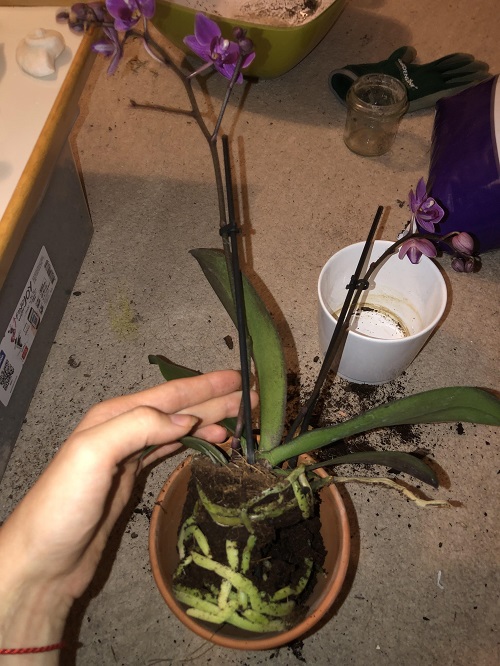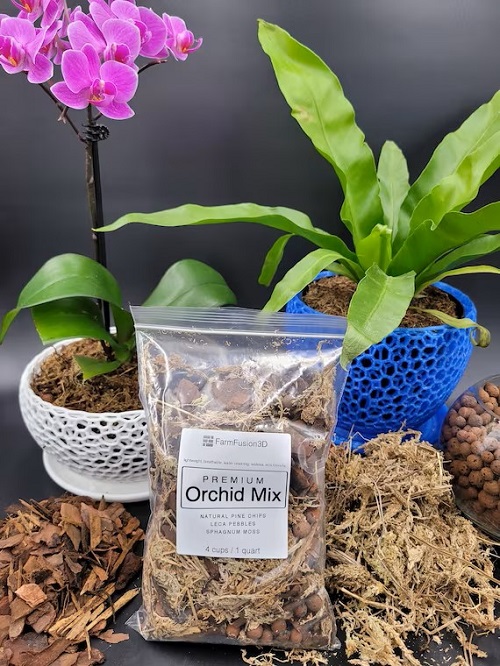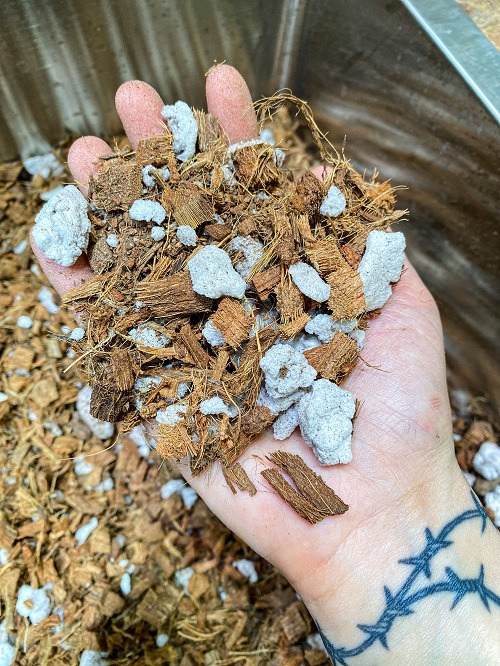Learn how to make the best potting mix for Orchids to grow some gorgeous blooms without much fuss!

While cultivating orchids is the dream of indoor gardeners, it is not really easy to get them to bloom. The secret to nurturing healthy orchid blooms really hinges on using the right growing mix. The good news is that you can make this perfect blend yourself with this informative guide!
Factors To Remember While Choosing Potting Mix For Orchids

1. Can’t Do Without Drainage
Naturally growing on the surfaces of other trees and plants, orchids are epiphytes and, in the wild, derive all nutrients from either rainwater or air. Since orchids are used to having constant airflow and their roots are exposed to the environment, you must replicate these growing conditions in the potting mix, too.
2. Moisture Retention, NOT Saturation
Don’t confuse well-draining soil with soil that is deprived and devoid of moisture. Good drainage is crucial, yes, but your soil must also retain enough moisture to keep the roots healthy without becoming waterlogged. Water saturation can lead to dreaded root rot, which is definitely something you want to avoid!
Ideally, your soil or potting mix should keep moist enough to hydrate your plants while allowing quick drying to steer clear of soggy conditions.
3. Nutrient A-plenty
Now that we’ve tackled moisture and aeration, let’s get into another vital aspect—the nutrients your orchids need. Orchids are somewhat finicky bloomers that require a careful balance of specific nutrients. The ideal potting mix should be rich in nitrogen, phosphorus, and potassium, which support healthy growth and vibrant blooms.
Additionally, they benefit from trace elements like calcium, magnesium, and iron, which are important for overall plant health and flower development.
How to Make Homemade Orchid Potting Mix?

Picking the right ingredients is all you need for a robust potting mix that provides the right blend of nutrients and aeration for your orchids. You can pick a Bark mix that mimics the natural growing conditions of many epiphytic species. This mix typically includes various components such as coco husk chips, tree fern, sphagnum moss (also known as peat moss), perlite, and fir bark.
- Tree fern provides excellent drainage and slow decomposition, although it’s on the pricier side and doesn’t hold moisture very well. Perlite, which looks a bit like styrofoam, is great at both draining and retaining water and is also good at holding onto nutrients.
- Coco husk chips are slightly less effective than larger bark pieces or chunks, but they’re still quite absorbent and break down slowly. Sphagnum moss is a favorite for its moisture retention and aeration capabilities, though it can sometimes hold too much moisture if it begins to decompose or is too densely packed.
- Lastly, fir bark is an affordable option available in various grades, such as fine, medium, and coarse. It tends to decompose more quickly than other materials and initially repels water, which can help prevent overwatering.
Steps to Follow:
- Start with a good-quality bark as your base. You can opt for coastal redwood bark, Douglas fir bark, or even Osmunda tree fern fiber if you’re feeling fancy.
- To ensure your orchids receive the right amount of moisture, add perlite, coconut husk chips, or sphagnum moss to the mix. These materials help balance the bark’s drainage properties with moisture retention.
- Now, combine your chosen base with your moisture-retaining ingredient in a 5:1 ratio. This ensures your orchids have enough air around the roots while still holding onto the necessary moisture.
Note: If using Osmunda tree fern fiber, pre-soak it in water for 12 hours to ensure it’s adequately hydrated. Mix it with redwood bark in a 3:1 ratio for optimal results.






